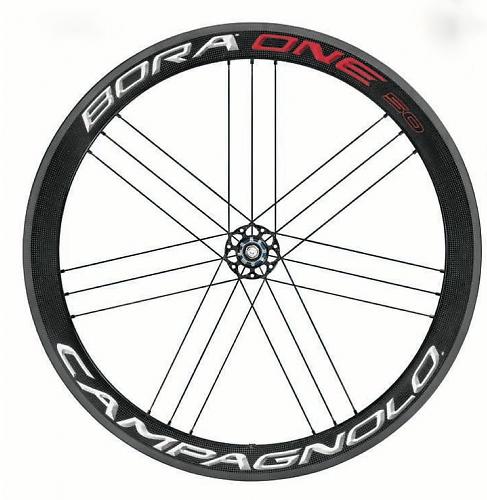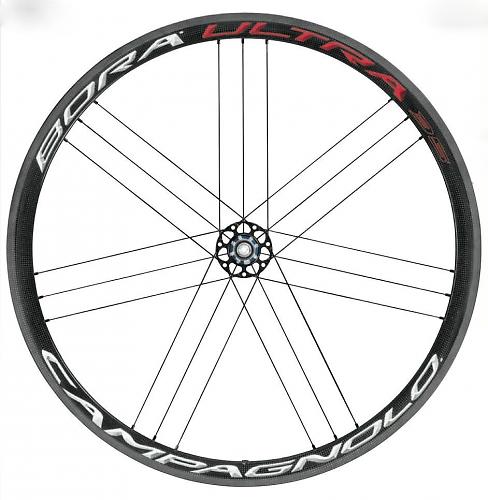- News
- Reviews
- Bikes
- Accessories
- Accessories - misc
- Computer mounts
- Bags
- Bar ends
- Bike bags & cases
- Bottle cages
- Bottles
- Cameras
- Car racks
- Child seats
- Computers
- Glasses
- GPS units
- Helmets
- Lights - front
- Lights - rear
- Lights - sets
- Locks
- Mirrors
- Mudguards
- Racks
- Pumps & CO2 inflators
- Puncture kits
- Reflectives
- Smart watches
- Stands and racks
- Trailers
- Clothing
- Components
- Bar tape & grips
- Bottom brackets
- Brake & gear cables
- Brake & STI levers
- Brake pads & spares
- Brakes
- Cassettes & freewheels
- Chains
- Chainsets & chainrings
- Derailleurs - front
- Derailleurs - rear
- Forks
- Gear levers & shifters
- Groupsets
- Handlebars & extensions
- Headsets
- Hubs
- Inner tubes
- Pedals
- Quick releases & skewers
- Saddles
- Seatposts
- Stems
- Wheels
- Tyres
- Health, fitness and nutrition
- Tools and workshop
- Miscellaneous
- Cross country mountain bikes
- Tubeless valves
- Buyers Guides
- Features
- Forum
- Recommends
- Podcast
TECH NEWS
Campagnolo launches Bora 35 and 50mm clincher wheels
Campagnolo redesigned its Bora carbon fibre wheels last year, making the rim wider and introducing a new 35mm option alongside the regular 50mm version. Both were only offered in a tubular version, but now the Italian company has added a clincher version of both Bora 35 and 50mm wheels for 2015.
“While most will recognise the tubular wheels as the go-to choice for top professional riders, the fact remains that tubular tires are less practical than clinchers for those of us not fortunate enough to have a support car with spare wheels following behind,” says Campagnolo.

We couldn’t agree more. Clincher wheels might carry a small weight penalty, but are far more practical and easy to set up in the first place.
The new clincher Bora 35 and 50mm rims feature the same 24mm wide rim as first introduced on the tubular versions last year. Tyres, and rims, are gradually going wider both in the pro peloton and in the amateur ranks. Wider tyres offer more bump absorption, less rolling resistance and more traction. The wider rim allows wider tyres to be used with the wider rim providing a better platform for wider tyres while avoiding the ‘light bulb’ effect.
The clincher wheels also get the same 3Diamant brake surface treatment, a process that removes more of the resin from the rim so the brake blocks are contacting the carbon fibre.

“The 3Diamant braking surface puts the surefooted braking performance of an aluminium wheel in a top-end high performance carbon wheel,” claims Campagnolo.
Both the 35 and 50mm wheelsets will be available with Bora Ultra and Bora One versions, which use the same hubs but ceramic bearings in the Ultra.
Here are the weights for the different wheelsets:
Bora Ultra 50: 1435 g
Bora Ultra 35: 1360 g
Bora One 50: 1485 g
Bora One 35: 1406 g
For comparison, the Bora Ultra 50 tubular version weighs a claimed 1,267g, so you’re looking at an extra 168g for the clincher version.
No UK prices have been confirmed yet. We’ll update this article as soon as we know. More at www.campagnolo.com
David worked on the road.cc tech team from 2012-2020. Previously he was editor of Bikemagic.com and before that staff writer at RCUK. He's a seasoned cyclist of all disciplines, from road to mountain biking, touring to cyclo-cross, he only wishes he had time to ride them all. He's mildly competitive, though he'll never admit it, and is a frequent road racer but is too lazy to do really well. He currently resides in the Cotswolds, and you can now find him over on his own YouTube channel David Arthur - Just Ride Bikes.
Latest Comments
- David9694 4 hours 44 min ago
Public path across Christchurch civic centre car park could stop sale, claims Friar’s Cliff Residents Association...
- David9694 5 hours 36 min ago
Morrisons supermarket car park cordoned off after car crash https://www.theargus.co.uk/news/25002751.morrisons-supermarket-car-park-...
- Matt Page 5 hours 54 min ago
It sounds like the shoes you have are the Boa L6, and they work well, although the Li2 is better, especially with dual-dial shoes. ...
- Oldfatgit 5 hours 59 min ago
I'm going to admit that I thought that [sic] was an indication of a spelling mistake .. and only after looking it up, I realise that I was *sort*...
- AidanR 6 hours 52 min ago
I wouldn't be so sure that he'll get away with this just because cops routinely shoot people and get off. The law is very different as effectively...
- C3a 7 hours 22 min ago
I just did a check on a Carrera Subway 2; currently on sale (£312) - Halford's says out of stock in my size and nothing until July.
- Rendel Harris 8 hours 2 min ago
What he wrote is a direct word for word quote from the King James Bible, one of the very greatest achievements of written English in the history of...
- stonojnr 8 hours 8 min ago
From what I understood from lawyers, there's nothing preventing a charge of manslaughter being applied in addition to death by dangerous driving...
- Dnnnnnn 8 hours 55 min ago
Nocturnal implementation isn't ideal but I think your final sentence captures why it was probably necessary....



Add new comment
16 comments
Sexy.
It's a shame to see the less practical tubular myth being perpetuated.
Please explain why it is a myth?
Scenario, riding home from work, windy, wet, pick up some glass and get a puncture. How would tubs be less hassle than clinchers?
Are you thinking of buying a pair of Campag Bora for the winter commute mrmo? Will you buy me some?
I hope Nick T doesn't mind me butting in.
The top clincher/tube/wheel combinations are faster now, but only the very, very best. There are good reasons riders still choose to own tubulars wheels;
- There is no 'team car' even for amateur racers. You put your spare wheels in the service van if you're road racing. The time taken to get you back on the road is critical, but it's down to fitting a wheel, not a repair.
- If you're TTing you don't need to climb into a ditch to sort a flat, you can roll-on slowly on a flat tub. The time taken to get back on the road isn't critical – your race is over, unless it's a long course in which case see above.
- you might just need a top-up of air if you've put some sealant in.
- you can train on them if you must. Sealant and gas will sort you out and a spare tyre if you're planning an epic.
- you don't need to spend a long time (at home or beside the road) with glue, tufo tape works.
- It's relatively easy and cheap to make a carbon tubular rim. It's expensive to make good carbon clincher. This matters to most riders because rims are consumable items.
- Modern tubular wheels (like above) are for going fast, if you're going fast you will certainly want latex tubes. Latex and carbon clinchers don't play nicely together. The times they decide to not play nicely tend to be on long, fast descents.
- Carbon clinchers delaminate sometimes. Those times tend to be on long, fast descents.
I hope this is useful. I'm not advocating one system over another. Both have limitations and are suited to different uses.
Take the valve core out, squirt a bit of sealant in, give it a spin and pump it up before continuing your journey. No removing a tyre, no looking for a puncture, no trying to put glue in the right place in the rain with wet fingers, no hassle. Then if you're unlucky enough to ride over another bit of glass, you probably won't even notice that the sealant has fixed it for you.
I really can't get my head round "the bigger the tyre the less the drag idea" for summer riding i use veloflex 21mm clinchers, for my winter riding i use hardshell gatorskins 25mm clinchers & I certainly know which is the easier to turn. Will we all end up riding very light bikes but with fat bike tyres? at what size does the aero effect stop and the drag friction on the road stop?
Not sure what you mean here - are you talking about aerodynamic drag or the rolling resistance ?
How far are manufactures going to take the big tyre = less aero drag, at what point does the rolling resistance become greater than the aero gain, just at the point where you have to purchase new wheels, or am i being cynical
The aero performance and rolling resistance depends on a whole bunch of stuff - including, for a given tyre line, the size of the tyre and the rim. Match the rim size to the tyre size and you might end up with a more aerodynamic shape - or not. What larger tyres volumes can provide is the potential for more comfort, higher grip and lower rolling resistance - but whether they do or not obviously depends in turn on a bunch of other stuff (e.g. pressure, compliance, compound).
None of that even considers the wheel dynamics, road surface or wind conditions. How big is too big ? Who knows - it's all so inter-twined with other stuff i'm not even sure it's answerable.
The latter.
I totally agree.
I agree with you, I understand getting rid of the "light bulb effect" with using the wide tire wide rim combo. But it can't be better than a thin rim and thin tire combo, when the treads you're ride on are almost points. I think the consideration was that being that you're going wider, the two together was better aero. But going wider is a compromise of aero for comfort. Yeah it has to be a line somewhere.
@Huw - I've only got entry-level Mavics (Ksyrium Equipes) but the lateral flex isn't great. I'm not talking about massive power either - I'm just your average-strength 70kg club rider, but can hear brake block rub and what sounds like some kind of spoke/drivetrain contact when I'm climbing out of the saddle. This is despite having the tension and truing checked. Put it this way - the stock Bontrager wheels on my Trek are better. My next will be handbuilt.
I used to swear by Campag wheels - light, durable, decent looking, etc
However, I've now been trying to get a replacement Eurus rim for the last 6 months to no avail. My LBS tells me that I might never get one, so for want of a rim I've got to chuck the whole wheel.
They also tell me that this is NOT the case with Mavic who do offer a decent rim replacement service. Will not be buying Campag wheels again however pretty they look.
Those weights seem more sensible than quoted on bike radar, which said the Bora One 50 clinchers were 1,313g! Thought that was too light for carbon clinchers.
Love the look of these, cant imagine the pricing to be too favourable though
The Bora One 35mm clinchers look good for mere mortals who want to make their toy a little flashier/quicker (such as me), but presumably that grouping of spokes prevents you from truing the wheels if a deflection appears on a part without spokes?